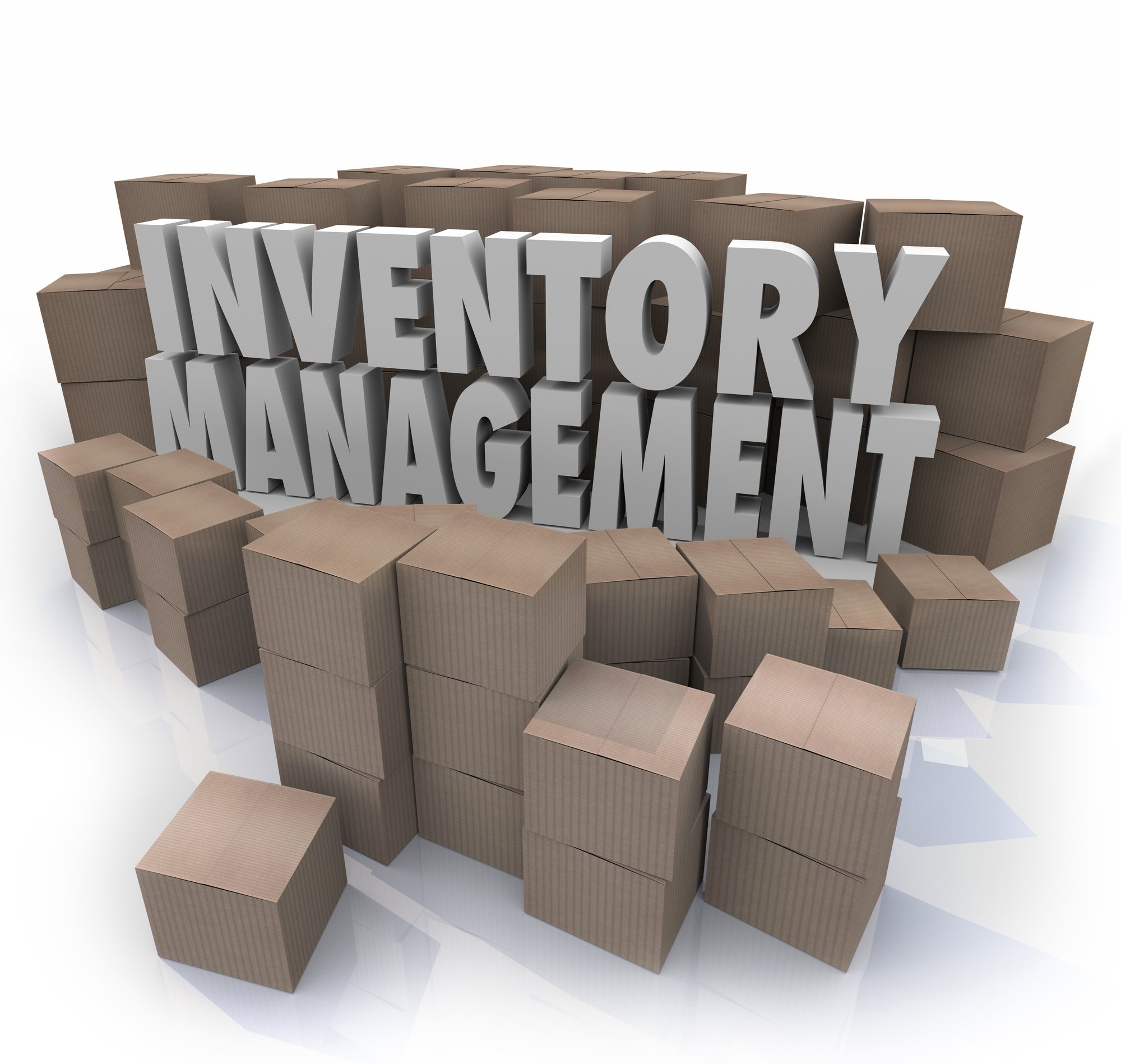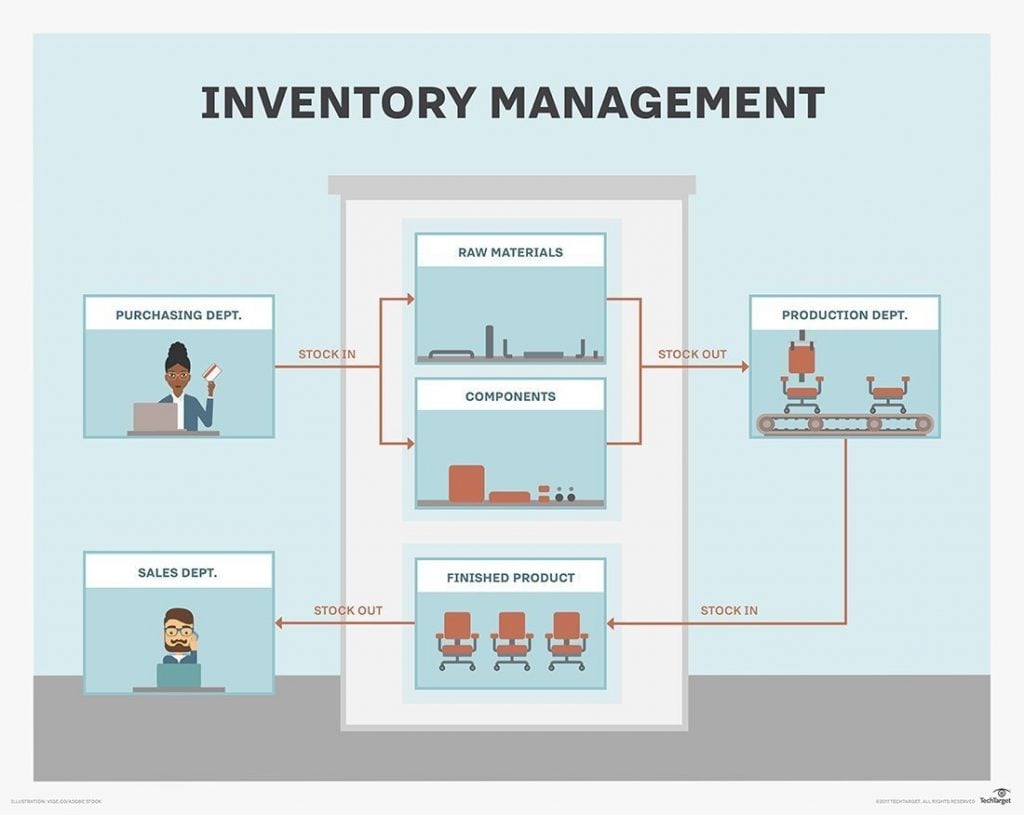Inventory management in business – In the realm of business, inventory management reigns supreme, offering a strategic advantage that can propel companies to remarkable heights. Join us as we unravel the intricacies of this vital practice, exploring its fundamental principles, cutting-edge systems, and innovative optimization techniques.
Together, let’s unlock the secrets of inventory management and empower businesses to achieve unparalleled efficiency and profitability.
Delving deeper into the topic, we will dissect the various types of inventory management systems, weighing their advantages and disadvantages to guide businesses in selecting the most suitable solution for their unique needs. Furthermore, we will delve into the art of inventory optimization, empowering companies to strike the perfect balance between stock levels and customer satisfaction.
By harnessing the power of data analytics and embracing best practices, businesses can streamline their inventory operations, minimize costs, and maximize their return on investment.
Inventory Management Concepts

Inventory management involves planning, organizing, and controlling the flow of goods, materials, and finished products throughout a business’s supply chain. Effective inventory management is essential for optimizing operational efficiency, reducing costs, and meeting customer demand.
Key Principles of Inventory Management
- Accurate inventory data:Maintaining accurate records of inventory levels is crucial for effective decision-making and preventing stockouts.
- Demand forecasting:Predicting future demand patterns helps businesses optimize inventory levels and avoid overstocking or understocking.
- Lead time management:Understanding the time it takes to procure and receive inventory is essential for setting appropriate inventory levels and avoiding delays.
li> Safety stock:Holding a certain amount of inventory as a buffer against unexpected demand fluctuations or supply chain disruptions.
Inventory Management Techniques, Inventory management in business
- First-in, first-out (FIFO):Products are sold or used in the order they are received, ensuring older inventory is cleared out first.
- Last-in, first-out (LIFO):Products are sold or used in the reverse order they are received, resulting in newer inventory being cleared out first.
- Just-in-time (JIT):Inventory is received only when needed for production, minimizing holding costs and waste.
- Consignment inventory:A supplier retains ownership of the inventory until it is sold by the business, reducing inventory costs.
Benefits of Effective Inventory Management
- Reduced costs:Optimizing inventory levels can reduce holding costs, procurement costs, and spoilage costs.
- Improved customer service:Accurate inventory data and efficient processes help businesses meet customer demand and minimize stockouts.
- Increased efficiency:Effective inventory management streamlines supply chain operations, reducing lead times and improving productivity.
- Enhanced decision-making:Accurate inventory data provides insights for informed decision-making on production planning, procurement, and sales forecasting.
Inventory Management Systems

Inventory management systems (IMS) are software applications that help businesses track and manage their inventory. They can be used to automate tasks such as inventory tracking, order processing, and shipping. There are many different types of IMS available, each with its own advantages and disadvantages.
The most common type of IMS is the perpetual inventory system. This system tracks inventory levels in real time, so businesses can always see how much inventory they have on hand. Perpetual inventory systems are more accurate than other types of IMS, but they can also be more complex and expensive to implement.
Another type of IMS is the periodic inventory system. This system tracks inventory levels at regular intervals, such as monthly or quarterly. Periodic inventory systems are less accurate than perpetual inventory systems, but they are also less complex and expensive to implement.
Businesses should carefully consider their needs when choosing an IMS. Factors to consider include the size of the business, the type of inventory, and the budget.
Choosing the Right Inventory Management System
- Consider the size of your business.Small businesses may be able to get by with a simple, manual inventory system. Larger businesses will need a more robust IMS that can handle a high volume of transactions.
- Consider the type of inventory you have.Some IMSs are designed for specific types of inventory, such as food or clothing. Make sure to choose an IMS that is compatible with the type of inventory you have.
- Consider your budget.IMSs can range in price from free to thousands of dollars per month. Choose an IMS that fits your budget and provides the features you need.
Inventory Optimization

Inventory optimization is the process of determining the optimal levels of inventory to hold in order to meet customer demand while minimizing costs. This involves finding the right balance between holding too much inventory, which can lead to high storage and carrying costs, and holding too little inventory, which can result in stockouts and lost sales.
There are a number of strategies that businesses can use to optimize their inventory levels, including:
- Safety stock:Holding a certain amount of extra inventory to buffer against unexpected fluctuations in demand or supply.
- Just-in-time (JIT) inventory:Ordering inventory only as needed, which can reduce storage costs and improve inventory turnover.
- Economic order quantity (EOQ):Determining the optimal quantity of inventory to order at a time to minimize total inventory costs.
- Vendor-managed inventory (VMI):Allowing suppliers to manage inventory levels on behalf of the business.
Data analytics can also play a valuable role in inventory management. By collecting and analyzing data on inventory levels, demand patterns, and supplier performance, businesses can gain insights into how to improve their inventory optimization strategies.
Examples of Inventory Optimization Success
Many businesses have successfully optimized their inventory levels using a variety of strategies. For example, Amazon uses a combination of JIT inventory and data analytics to manage its vast inventory of products. This has allowed Amazon to reduce its inventory carrying costs while still meeting customer demand.
Another example is Walmart, which uses a vendor-managed inventory system to manage its inventory of everyday consumer goods. This system has helped Walmart to improve its inventory turnover and reduce its out-of-stock rates.
Inventory Cost Management
Inventory cost management involves identifying, tracking, and controlling the costs associated with holding and managing inventory. Effective inventory cost management helps businesses optimize inventory levels, reduce waste, and improve profitability.
Inventory Carrying Costs
Inventory carrying costs refer to the expenses incurred while holding inventory. These costs include:
- Capital costs:Interest on capital invested in inventory
- Storage costs:Rent or lease payments for storage facilities
- Insurance costs:Premiums for insuring inventory against loss or damage
- Handling costs:Labor expenses for receiving, storing, and issuing inventory
- Obsolescence costs:Losses incurred when inventory becomes outdated or obsolete
Calculating Inventory Carrying Costs
Inventory carrying costs can be calculated using various methods, including:
- Average inventory cost:(Beginning inventory + Ending inventory) / 2
- Weighted average cost:Total cost of goods purchased / Total units purchased
- FIFO (First-In, First-Out):Assumes that the first items purchased are the first ones sold
- LIFO (Last-In, First-Out):Assumes that the last items purchased are the first ones sold
Strategies for Reducing Inventory Costs
Businesses can employ several strategies to reduce inventory costs, such as:
- Just-in-time (JIT) inventory:Minimizing inventory levels by receiving materials or goods only when needed for production
- ABC analysis:Classifying inventory items into categories based on their value and usage, with higher-value items receiving more attention and control
- Vendor-managed inventory (VMI):Allowing suppliers to manage inventory levels on behalf of the business
- Consignment inventory:Holding inventory without taking ownership until it is sold
- Negotiating favorable terms with suppliers:Securing discounts, extended payment terms, or free shipping
Inventory Control
Inventory control involves monitoring and managing inventory levels to ensure the right amount of stock is available at the right time. It plays a crucial role in optimizing inventory levels, minimizing costs, and improving operational efficiency.
Effective inventory control relies on accurate and real-time tracking of inventory items. This can be achieved through various methods, including:
Manual Tracking
Manual tracking involves physically counting and recording inventory levels using pen and paper or spreadsheets. While simple and cost-effective, this method can be prone to errors and is not suitable for large-scale or fast-paced inventory management.
Automated Tracking
Automated tracking systems use technology to track inventory levels in real-time. This can be done through the use of barcodes, RFID (Radio Frequency Identification) technology, or inventory management software. These systems provide accurate and up-to-date inventory information, reducing the risk of errors and improving efficiency.
Barcodes and RFID Technology
Barcodes and RFID tags are widely used in inventory control. Barcodes are one-dimensional optical labels that can be scanned to identify and track inventory items. RFID tags, on the other hand, are small electronic devices that emit radio waves, allowing for contactless tracking and identification of inventory items.
Inventory Audits
Inventory audits are periodic physical counts of inventory items to verify their accuracy and identify any discrepancies between the physical inventory and the records. Regular inventory audits are essential for ensuring the integrity of inventory data and minimizing losses due to theft or damage.
Inventory Forecasting

Inventory forecasting is the process of predicting future demand for inventory items. It is a critical part of inventory management, as it helps businesses ensure that they have the right amount of inventory on hand to meet customer demand without overstocking or running out of stock.
There are a number of different methods for forecasting inventory demand. Some of the most common methods include:
- Historical data analysis:This method involves using historical data on sales, demand, and other factors to predict future demand.
- Machine learning:This method uses machine learning algorithms to identify patterns in historical data and make predictions about future demand.
- Expert opinion:This method involves consulting with experts in the field to get their opinions on future demand.
The best method for forecasting inventory demand will vary depending on the specific business and the available data. However, all of these methods can be used to improve inventory management and reduce the risk of overstocking or running out of stock.
Use of Historical Data and Machine Learning in Inventory Forecasting
Historical data and machine learning are two of the most important tools for inventory forecasting. Historical data can be used to identify trends and patterns in demand, which can then be used to make predictions about future demand. Machine learning algorithms can be used to automate the process of identifying patterns in historical data and making predictions.
This can save businesses a significant amount of time and effort, and it can also improve the accuracy of forecasts.
There are a number of different machine learning algorithms that can be used for inventory forecasting. Some of the most common algorithms include:
- Linear regression:This algorithm is used to predict a linear relationship between two or more variables.
- Time series analysis:This algorithm is used to predict future values in a time series based on past values.
- Neural networks:This algorithm is used to predict complex relationships between variables.
The best machine learning algorithm for inventory forecasting will vary depending on the specific business and the available data. However, all of these algorithms can be used to improve the accuracy of forecasts.
Examples of Successful Inventory Forecasting
There are a number of businesses that have successfully used inventory forecasting to improve their operations. For example, Amazon uses a combination of historical data analysis and machine learning to forecast demand for its products. This allows Amazon to keep its inventory levels low while still meeting customer demand.
Another example is Walmart, which uses a time series analysis algorithm to forecast demand for its products. This algorithm has helped Walmart to reduce its inventory levels by 15% while still meeting customer demand.
Inventory Management in Different Industries: Inventory Management In Business

Inventory management practices vary significantly across industries due to diverse product characteristics, demand patterns, and industry-specific goals. Understanding these unique challenges and implementing tailored strategies can optimize inventory levels, reduce costs, and enhance customer satisfaction.
Retail Industry
Challenges:High product variety, seasonal fluctuations, unpredictable demand Best Practices:
- Implement demand forecasting techniques to predict future demand accurately.
- Maintain optimal safety stock levels to prevent stockouts during peak seasons.
- Use inventory management software to track inventory levels and automate reordering processes.
Manufacturing Industry
Challenges:Complex supply chains, long lead times, fluctuating raw material prices Best Practices:
- Establish strategic partnerships with suppliers to secure reliable raw material supply.
- Implement just-in-time (JIT) inventory management to minimize inventory holding costs.
- Utilize inventory optimization techniques to determine optimal production quantities and reorder points.
Healthcare Industry
Challenges:Perishable inventory, strict regulatory requirements, unpredictable patient demand Best Practices:
- Implement inventory management systems that comply with industry regulations.
- Establish effective inventory control measures to prevent expired or damaged products.
- Use demand forecasting techniques to anticipate patient needs and ensure adequate inventory levels.
Epilogue
As we conclude our exploration of inventory management, let us reflect on the profound impact it has on business success. By embracing effective inventory management strategies, companies can gain a competitive edge, enhance customer satisfaction, and optimize their financial performance.
Remember, inventory is not merely a collection of goods; it is a strategic asset that, when managed wisely, can propel businesses to new heights of prosperity.
Essential FAQs
What are the key benefits of effective inventory management?
Effective inventory management optimizes stock levels, reduces carrying costs, improves customer satisfaction, enhances cash flow, and streamlines supply chain operations.
How can businesses optimize their inventory levels?
Businesses can optimize inventory levels through forecasting demand, implementing just-in-time inventory systems, leveraging data analytics, and establishing safety stock levels.
What are the common challenges faced in inventory management?
Common challenges include forecasting accuracy, managing seasonal demand fluctuations, preventing stockouts, minimizing waste, and optimizing storage space.
